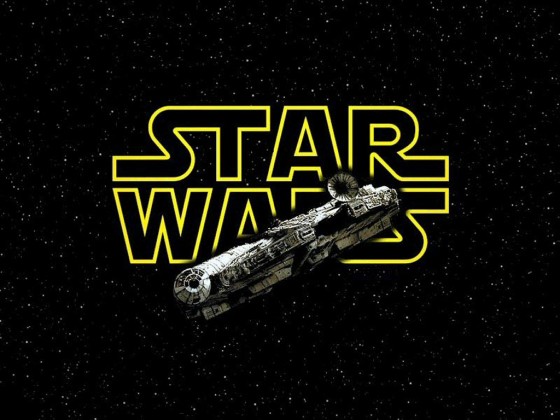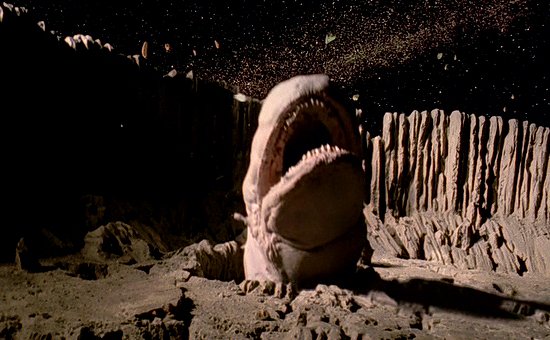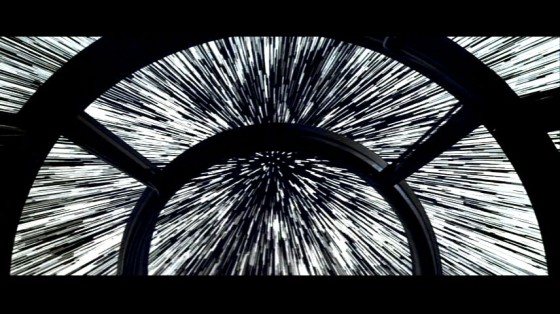Opinions Vary: Star Wars, Millennium Falcons, and Unexpected Reversals of Fortune
There’s been a lot of talk this week on Omega-Level about the future of Star Wars. Arguments and counterarguments, both civil and passionate, flourished in the wake of JJ Abrams’ divisive entry in the Star Trek cannon. And now that he’s currently trekking across that universe towards a galaxy far, far way, most of the debating followed that trajectory by warping from Trek to Wars, going from what he’s done with his previous work(s) to what he will do with his forthcoming ones. In turn, it’s all become decidedly speculative and forward-looking, as we all try to get a read (and perhaps a grip) on what is to come. But before we can go forward, it’d be wise to examine why past Star Wars lent themselves to expansive and exciting storytelling—the stuff that truly made us want to go for the ride in the first place (and, ideally, attract us to the prospects of new installments). For this reason, let’s take a look back at the “long time ago” part of the Star Wars equation, principally by discussing the original trilogy in this week’s Opinions Vary.
Now, in truth, the timing of this robust discussion and anticipation could not have been more fortuitous for me because I’ve wanted to examine a correlation in the original Star Wars trilogy for a while now. It’s something that I’ve found interesting and, even though it’s certainly not a revolutionary insight into the trilogy, it does get at some of the reasons why I think many aspects of the original trilogy work so well. And maybe with a dash of dastardly extrapolation and over-analysis, this writing might fit snuggly into the recent discourse about the upcoming movies. So here’s my contention: The overall quality of each movie in the original Star Wars trilogy has a, more or less, inverse relationship to the condition of the Millennium Falcon therein. In other words, the better the installment, the worse the Millennium Falcon performs. And when the plotting and intrigue function at an exceptional level, the Millennium Falcon tends to be malfunctioning in conjunction.
Without question, the Millennium Falcon has become an iconic spaceship, one of the most memorable hyperspace jumpers the cinema has ever seen—even if, upon its first appearance in A New Hope, it’s manifest that the ship has seen better days. By Luke’s estimation, it’s a piece of junk; by Han’s, it doesn’t look like much but has it where it counts. But for the viewer, regardless of its state, it’s a sight to behold; its scrappiness, for better or worse, is a major part of its unique character, adding greatly to its lived-in look, as well as indicative of its exciting history. Each melded scrap holds its own story (as well as the whole ship together); each scrape is a battle scar.
From the get-go, with the new battles ahead in ANH, the condition of the Millennium Falcon could spell doom for its passengers. Whether the ship is fast enough for the travel becomes an afterthought to concerns over whether the ship can hold together. And for the most part in the film, The Falcon is unable to outrun trouble. It gets caught in the Death Star’s tractor beam, immobilizing the ship for much of the movie. And when they are finally able to escape, they must blast away TIE fighters because, without lateral controls, the Falcon isn’t quick enough to get away easily. And during the final battle against the Death Star, even though the Falcon swoops in at the last minute to help Luke save the day (and send Darth Vader spiraling into space), it’s effective mainly because it’s a stealth attack. Like Vader (“Whaaat?”), the audience is caught off guard, not expecting the Falcon because we’ve seen it so powerless for so long. Consequently, how the Falcon is used and depicted contributes greatly to what makes ANH such a wonderful film. The exhilarating plotting is, more often than not, made possible because the Falcon isn’t capable of getting a clean getaway or clear shot. And the unexpected turns by way of the failing Falcon elevate the overall storytelling to greater heights.
This ascent to superior storytelling—by way of its descent through greater quandaries, no less—continues along these lines in Empire Strikes Back. Easily the darkest film of the original trilogy (and I’d argue the best), our heroes find themselves in tougher situations, and it’s no surprise that the deteriorated condition of the Falcon only worsens their woes. When attacked at Hoth, Han and Chewbacca are desperately trying to make repairs on the ship, but to no avail; they have to evacuate before it is in a serviceable condition. And for most of the movie, they (along with Leia, C3PO and R2D2) try to find the time to get the ship in working order, which parallels their lives and circumstances nicely. They are just trying to keep everything together—their group, their ship, their galaxy. However, they can’t catch a break. They try to fix the Falcon on the fly, but they don’t have the time, the resources, or the luck. And because they can’t patch up the ship, with trouble looming every which way, Han can only bemoan the quagmire, saying, “it’s not fair” and “it’s not my fault”–two lines that really sum up the proceedings; everything seems to be out of their hand, and that lack of control is incredibly unnerving for them (but makes for great drama for us). For the entire movie, even when they think they find a safe haven at Cloud City, they are perpetually on the run with no place to go.
All of these troubles with the Falcon contribute to an overwhelming sense of dread throughout the movie, a dread made expressly clear in Luke’s vision of the future. With the future being a time that’s “always in motion,” it no doubt would help to have a ship that could outmaneuver the dark forces that set such hard times into motion and currently chase them around, which, in turn, drive Luke back into the main storyline, away from his training. Thus, no one can avoid the darkness in this future. If they can’t get around as nimbly as they’d like (especially if they’re on the run), then no amount of stealth and stick-to-itiveness can keep danger at bay. They can’t escape; they have to face up to whatever comes their way. So Luke finds out Vader is his father, losing a hand in the process. Han is frozen in carbonite. And the rest of the group barely escapes with their lives. Whereas they’d been victorious in ANH, ESB is steeped in failure. And yet, because the movie attacks the dark side head on, going to wonderfully dramatic places, without shirking or avoiding the dire possibilities, the movie is an apotheosis in the series (and, in many ways, all movie sequels).
With Return of the Jedi, however, there’s a contradictory development in the depiction of the iconic ship: no longer in the ramshackle state as in ANH and ESB, the Millennium Falcon is not only fully functional throughout the entire film, without any problems whatsoever, but the Falcon is used to lead the final charge against the second Death Star. All of the intriguing dilemmas that came about from malfunctions and breakdowns is cast aside for straight-forward interstellar fare. And the potent uncertainties and dicey predicaments (begun in ANH and proliferated in ESB) that came with Falcon’s failings are likewise discontinued. Even worse, the increase in the ship’s capabilities coincide with a level of ease to the proceedings that had previously been absent in the series (the Ewoks’ rousing defeat of the Empire comes to mind). And the darkness that had been building for the first two movies, slowly but surely enveloping all (and helping to make the movies terrific in the process) is dissipated. Meanwhile, the Rebellion, with the Falcon at the forefront, have fewer threats to contend with. Their goal is more singular and known; they follow a battle plan (a multifaceted one, to be fair) without much deviation from it, as their course, like ROTJ‘s narrative itself, is plotted forward in a direction that dodges the numerous pitfalls that had plague them previously.
Moreover, the disconnection of the Falcon is heightened by the fact that the main characters aren’t controlling it for the most important moments of the film. In the final battle, the Falcon is piloted by Lando Calrissian and Nien Nunb. All the trials and tribulations that they’d overcome in the cockpit of the Falcon become things of the past. The ship that was inextricably linked to their troubles, for good or ill, is no longer needed in order for them to fight the Empire. They have other missions to complete, ones that aren’t nearly as dangerous as those they had to confront while navigating the Falcon, which undercuts their present actions in the movie. Their prospects in ROTJ are much more clear-cut and, as a result, are dramatically lacking; the sense of dread and unpredictability (that had often come in tandem with flying the Falcon) is gone. And the overall film suffers because of these deficiencies.
Of course, watching malfunctions and technological difficulties in a third movie might have been excessive (and a bit predictable in its own way), but the larger point still stands: Without that unexpectedness and penchant for things-gone-awry (that arise from such obstructions), the storytelling (and the whole series, for that matters) tends to become much less invigorating, which is exactly what Star Wars should be. When it works, an audience should brace itself for whatever comes next, for whatever twist and turn that edges its way into the story, because the audience doesn’t know what’s to come. At its best, Star Wars has that ability to surprise and entertain in spades and, as we go forward (back from my “long time ago” look-see) I think it still has the potential to work on audiences the same way it has in the past. And, ultimately, not knowing what’s to come is what’s so attractive about the new movies (and, conversely, what was always a drawback with the prequels was a prequel’s inherent sense of inevitability and expectation since we knew what was going to go down). The new movies should be just that–new. They shouldn’t be overly dependent on the past–we know it too well already–but rather bask in the sense of scope and mystery (something that JJ Abrams loves) that come with new possibilities, that can keep us guessing and excited in equal measure. They shouldn’t be afraid to take audiences to places, distant and dangerous. Far, far from it. Because, when it’s all said and done, the best way to be like the great Star Wars movies of the past is to try to be something different in the future.






